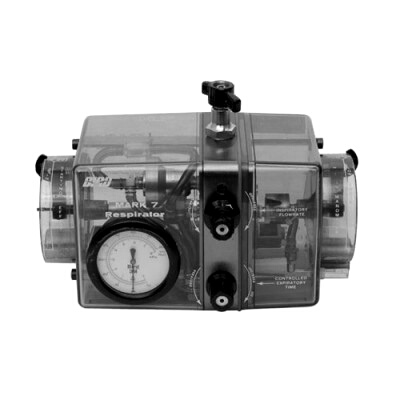Although the Bird ventilator was, by today’s standards, basic, and gave many on-call respiratory physiotherapists nightmares, it was a powerful tool that in skilled hands saved many people’s lives.
The Bird Mark 7 was the first commercially produced ventilator, designed by Dr Forrest Bird, who had studied pilots’ breathing problems at high altitude during WWII. The Mark 7 came into production in 1957 and was the first significant alternative to the Iron Lung (see 100 Objects reference). It was small, portable, simple, and sensitive, and ‘blew’ air into the person’s lungs directly, via a mask or tube (Gaskell and Webber, 1973).
Each breath was triggered by the patient, and the amount of support it gave could be adjusted to the patient’s needs, so it could be used to avert a respiratory arrest, support the person’s breathing in intensive care units, and help wean them from ventilation. As ventilator technology developed, the Bird became increasingly useful for physiotherapists working weekends and on-call, and many learned the principles of positive pressure ventilation with it. But it was no easy device to assemble and maintain, and on many occasions it would be difficult to find a missing part in the middle of the night with the patient’s blood gases collapsing.
Today, particularly after the COVID outbreak, non-invasive ventilation technology has largely left the Bird behind, but it still remains a widely used technology around the world.
Description provided by Dave Nicholls of New Zealand.
Reference:
Gaskell DV, Webber B. Brompton Hospital Guide to Chest Physiotherapy. London: Blackwell Science; 1973

